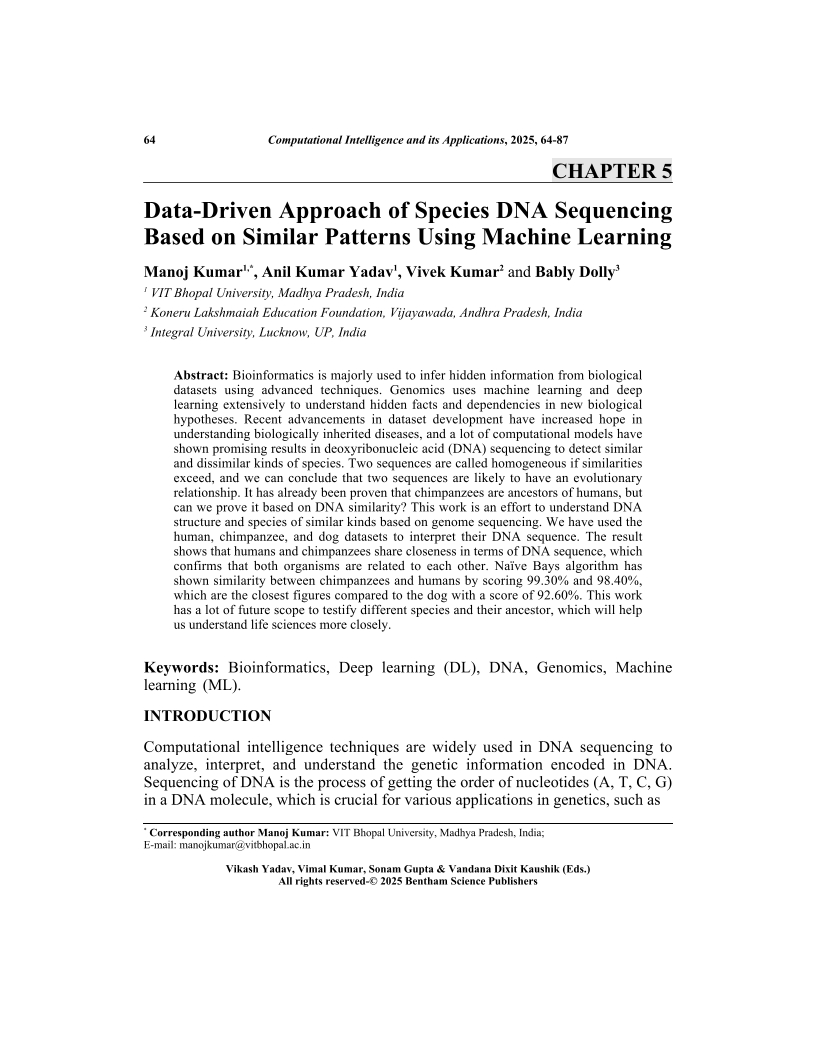Data-Driven Approach of Species DNA Sequencing Based on Similar Patterns Using Machine Learning

- Authors: Manoj Kumar1, Anil Kumar Yadav2, Vivek Kumar3, Bably Dolly4
-
View Affiliations Hide Affiliations1 VIT Bhopal University, Madhya Pradesh, India 2 VIT Bhopal University, Madhya Pradesh, India 3 Koneru Lakshmaiah Education Foundation, Vijayawada, Andhra Pradesh, India 4 Integral University, Lucknow, UP, India
- Source: Computational Intelligence and its Applications , pp 64-87
- Publication Date: March 2025
- Language: English
Data-Driven Approach of Species DNA Sequencing Based on Similar Patterns Using Machine Learning, Page 1 of 1
< Previous page | Next page > /docserver/preview/fulltext/9789815313321/chapter-5-1.gif
Bioinformatics is majorly used to infer hidden information from biological datasets using advanced techniques. Genomics uses machine learning and deep learning extensively to understand hidden facts and dependencies in new biological hypotheses. Recent advancements in dataset development have increased hope in understanding biologically inherited diseases, and a lot of computational models have shown promising results in deoxyribonucleic acid (DNA) sequencing to detect similar and dissimilar kinds of species. Two sequences are called homogeneous if similarities exceed, and we can conclude that two sequences are likely to have an evolutionary relationship. It has already been proven that chimpanzees are ancestors of humans, but can we prove it based on DNA similarity? This work is an effort to understand DNA structure and species of similar kinds based on genome sequencing. We have used the human, chimpanzee, and dog datasets to interpret their DNA sequence. The result shows that humans and chimpanzees share closeness in terms of DNA sequence, which confirms that both organisms are related to each other. Naïve Bays algorithm has shown similarity between chimpanzees and humans by scoring 99.30% and 98.40%, which are the closest figures compared to the dog with a score of 92.60%. This work has a lot of future scope to testify different species and their ancestor, which will help us understand life sciences more closely.
-
From This Site
/content/books/9789815313321.chapter-5dcterms_subject,pub_keyword-contentType:Journal -contentType:Figure -contentType:Table -contentType:SupplementaryData105

